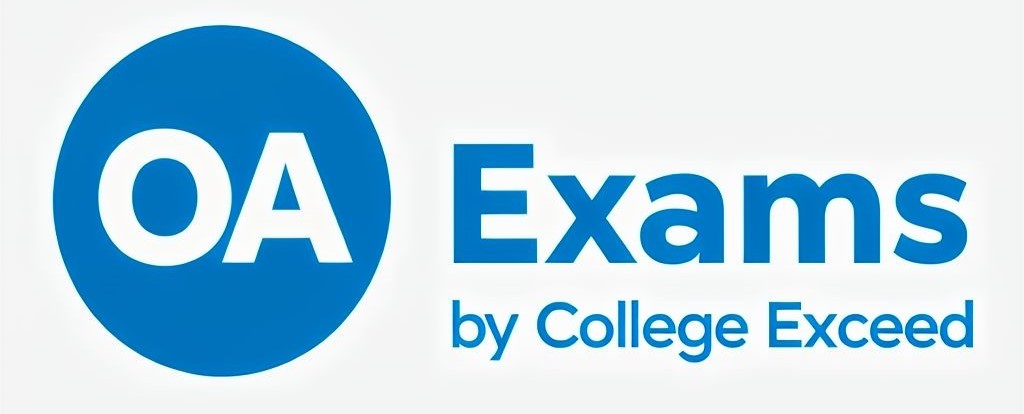-
web.groovymark@gmail.com
- December 8, 2024
Question 21
Which products would be produced using the process costing method?
a) Manufacturing jets for commercial airlines
b) Making custom boats for sale, each with different features
c) Preparing tax returns for individuals of extremely high net worth
d) Manufacturing bottles of ketchup for sale in grocery stores
Answer: d) Manufacturing bottles of ketchup for sale in grocery stores
Explanation: Process costing is suitable for mass-produced items like ketchup.
Question 22
Which is true regarding process costing?
a) Process costing includes only direct materials and direct labor costs and excludes manufacturing overhead costs when computing the cost of finished goods
b) The focus of the cost computations in process costing is on the unique job being worked on
c) Process costing assigns costs equally to each unit produced during a period
d) In process costing, even though manufacturing companies can specifically identify costs for each product being produced, they find it easier to calculate the average cost of all products
Answer: c) Process costing assigns costs equally to each unit produced during a period
Explanation: Process costing evenly distributes costs to all units produced in a period.
Question 23
Which manufacturing company should use process costing?
a) A gasoline refinery
b) A passenger airline manufacturing division
c) A manufacturer of custom furniture
d) A manufacturer of engraved t-shirts
Answer: a) A gasoline refinery
Explanation: Process costing is suitable for industries like gasoline refining, where products are continuously mass-produced.
Question 24
In a process costing system, what is the correct cost calculation step?
a) Calculate manufacturing overhead costs for each product
b) Calculate direct labor costs for each product
c) Calculate direct materials costs for each product
d) Calculate the average cost using total manufacturing costs for each product
Answer: d) Calculate the average cost using total manufacturing costs for each product
Explanation: Process costing averages total costs over all units produced.
Question 25
When is it appropriate to use process costing?
a) When a company produces a large volume of unique items using a series of item-specific processes
b) When a company produces a large volume of products using a series of uniform processes
c) When a company produces custom-made products only when an order is received from a customer
d) When a company produces a small volume of unique items using a series of item-specific processes
Answer: b) When a company produces a large volume of products using a series of uniform processes
Explanation: Process costing is used for large volumes of products that pass through a uniform series of production processes.
Question 26
What is a unique feature of process costing?
a) The presence of manufacturing overhead costs
b) The units go through process centers when being produced
c) The ability to attach specific costs to specific products
d) The presence of direct materials in the finished goods
Answer: b) The units go through process centers when being produced
Explanation: Process costing tracks units as they move through various production stages or centers.
Question 27
Why would a soda company and a gasoline company both primarily use process costing?
a) Because they are two of the largest companies in the United States, and all big companies use process costing
b) Because each of their products consume direct labor and direct materials but no manufacturing overhead
c) Because each unit of product produced by the two companies is identical to other products of the same type
d) Because they each only make one product, so process costing is applicable to both companies
Answer: c) Because each unit of product produced by the two companies is identical to other products of the same type
Explanation: Process costing works well when products are homogeneous, like soda or gasoline.
Question 28
What is true about process costing?
a) It allows specific product costs to be applied to each product that is made differently
b) It can only be used in manufacturing firms and not in service firms
c) It is appropriate when the work performed on each product that goes through various work centers is the same
d) It is always more accurate than job order costing
Answer: c) It is appropriate when the work performed on each product that goes through various work centers is the same
Explanation: Process costing is ideal for situations where similar work is performed on all units.
Question 29
Process costing would work best when making which products?
a) Manufacturing a brand of trucks
b) Producing chewing gum
c) Constructing a highway bridge
d) Completing the corporate tax return for a corporation
Answer: b) Producing chewing gum
Explanation: Process costing works well for mass-produced, identical products like chewing gum.
Question 30
In a process costing system, production costs are accumulated in the process centers. Where do the costs go when all production work is completed in the process centers?
a) Finished goods inventory
b) Selling, general, and administrative expenses
c) Manufacturing overhead
d) Raw materials inventory
Answer: a) Finished goods inventory
Explanation: Once production is complete, costs are transferred to finished goods inventory.
Question 31
Which is a measure of the amount of work done during the production period under process costing?
a) Direct materials
b) Conversion costs
c) Equivalent units of production
d) Equivalent units in beginning inventory
Answer: c) Equivalent units of production
Explanation: Equivalent units of production measure the work done on partially completed units, allowing accurate cost allocation in process costing.
Question 32
What are the sum of direct labor and manufacturing overhead costs referred to in a process costing system?
a) Total manufacturing costs
b) Conversion costs
c) Finished goods inventory
d) Manufacturing costs
Answer: b) Conversion costs
Explanation: Conversion costs represent the total of direct labor and manufacturing overhead, which are the costs required to convert raw materials into finished goods.
Question 33
Assume a production process using process costing starts with a certain number of units in beginning inventory that are partially completed, a certain number of units are started and completed during the period, and the ending inventory at the end of the period is partially complete. How would you determine the equivalent units of production in this situation for the period?
a) Add the work required to complete the units in beginning inventory plus the degree of completion of the ending inventory units
b) Add the work required to start and complete the units started during the period plus the degree of completion of the ending inventory units
c) Add the work required to complete the units in beginning inventory to the number of units started and completed during the period to the degree of completion of the ending inventory units
d) Add the work required to complete the units in beginning inventory plus the number of units started and completed during the period
Answer: c) Add the work required to complete the units in beginning inventory to the number of units started and completed during the period to the degree of completion of the ending inventory units
Explanation: This formula accurately accounts for the work done on beginning inventory, units started and completed, and units still in process.
Question 34
Which cost would most likely be included first in a process center?
a) Direct labor
b) Direct materials
c) Manufacturing overhead
d) Conversion costs
Answer: b) Direct materials
Explanation: Direct materials are typically the first cost included in the production process as they are required to begin manufacturing.
Question 35
n process costing, the units completed and the units remaining in ending work-in-process inventory at the end of the period come from which of the following?
a) The units in beginning inventory and the units started during the current period
b) Only the units started during the current period
c) The units in ending inventory and the units started during the period
d) Only the units in ending inventory in the current period
Answer: a) The units in beginning inventory and the units started during the current period
Explanation: The units "in play" during the period are the sum of the units in beginning inventory and those started during the period.
Question 36
Which of the following are transferred from work-in-process to finished goods inventory?
a) Only the actual inventory items
b) Only the cost of the inventory items
c) Neither the actual goods nor the cost of the finished items
d) Actual inventory items and the costs of those inventory items
Answer: d) Actual inventory items and the costs of those inventory items
Explanation: Both the actual goods and their associated costs are transferred to finished goods when they are completed.
Question 37
Which costs make up the work-in-process inventory costs in the processing centers?
a) Direct materials and manufacturing overhead costs
b) Direct labor and manufacturing overhead costs
c) Direct materials and conversion costs
d) Direct materials and direct labor costs
Answer: c) Direct materials and conversion costs
Explanation: Work-in-process inventory costs are comprised of direct materials and conversion costs (direct labor and manufacturing overhead).
Question 38
Which term is used for direct materials and conversion costs associated with items started but not finished?
a) Finished goods inventory
b) Work-in-process inventory
c) Cost of goods sold
d) Direct labor
Answer: b) Work-in-process inventory
Explanation: Work-in-process inventory includes all costs incurred for items that are in the process of being produced but are not yet completed.
Question 39
Which statement accurately describes the equivalent number of units?
a) The equivalent number of units is calculated by adding together the physical goods placed in process during the current period with the physical goods in ending inventory
b) The equivalent number of units is calculated by adding together the physical goods in beginning inventory to the physical goods placed in process during the current period
c) The equivalent number of units is always the same as the number of physical units transferred to finished goods
d) The equivalent number of units is not the same as the number of physical units transferred to finished goods
Answer: d) The equivalent number of units is not the same as the number of physical units transferred to finished goods
Explanation: Equivalent units represent a measure of work done on units, which may differ from the actual number of physical units completed.
Question 40
The costs that are associated with units completed and transferred out this period are the sum of which components?
a) The cost of beginning work-in-process inventory, both materials and conversion cost, and the cost per equivalent unit required to complete those units in beginning inventory
b) The cost of beginning work-in-process inventory, both materials and conversion costs; the cost per equivalent unit required to complete those units in beginning inventory; and the cost per equivalent unit of the items started and completed this period, both materials and conversion costs
c) The cost per equivalent unit required to complete the units in beginning inventory and the cost per equivalent unit of the items started and completed this period, both materials and conversion costs
d) Only the cost per equivalent unit of the items started and completed this period, both materials and conversion costs
Answer: b) The cost of beginning work-in-process inventory, both materials and conversion costs; the cost per equivalent unit required to complete those units in beginning inventory; and the cost per equivalent unit of the items started and completed this period, both materials and conversion costs
Explanation: The costs transferred out include all costs related to beginning inventory and units started and completed during the period.



